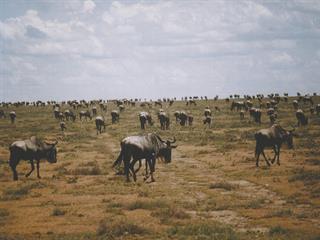
Numbers of large mammals are dropping in national parks all over Africa – except in the continent’s southern countries, where good management shows what can be achieved. Alan Harman reports.
National parks such as the Masai Mara in Kenya and the Serengeti in Tanzania have seen populations of large mammals decline by up to 59% since 1970, but there has been an increase in parks in southern Africa.
A study published in Biological Conservation says Africa’s parks are visited by thousands of tourists each year hoping to spot the big five – lion, elephant, buffalo, leopard and rhino – but urgent efforts are needed to secure the future of the parks. For the study, scientists from the Zoological Society of London (ZSL) and Cambridge University created an index of change in population abundance for many species in 78 protected areas throughout Africa.
The index reveals an average decline of almost 60% in 69 key species, including lion, wildebeest, giraffe, buffalo and zebra between 1970 and 2005 in the national parks. There is great variation by region. Although populations have increased in southern Africa, they’ve declined by more than half in east Africa and by 85% in west Africa. The study found that the latter decline was likely due to the lack of financial and personnel resources, high rate of habitat degradation and the growing bushmeat trade. But despite the severe losses, the rate of decline has slowed over time, indicating management of the areas has been improving gradually – but more support is needed.
“Although the results indicate that African national parks have generally failed to maintain their populations of large mammals, the situation outside the parks is undoubtedly worse,” says Ian Craigie, study leader and ZSL researcher.“Many species, such as rhino, are practically extinct outside national parks,” adds Jonathan Baillie, director of ZSL conservation programmes. “But the increasing population trends in southern Africa provide hope and demonstrate that protected areas can be very effective for conserving large mammals if properly resourced.” |fw













